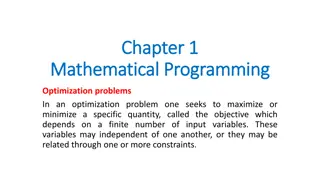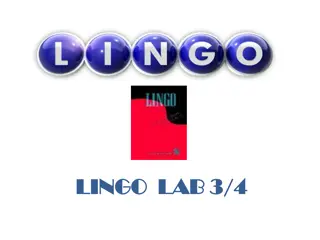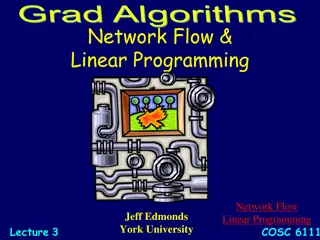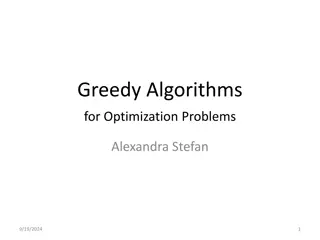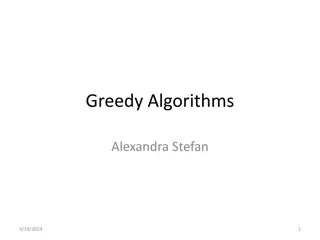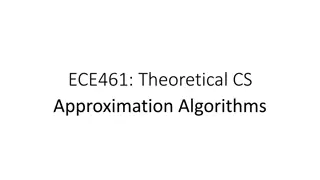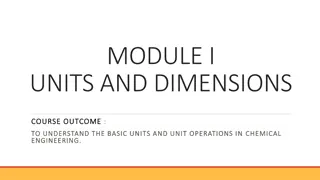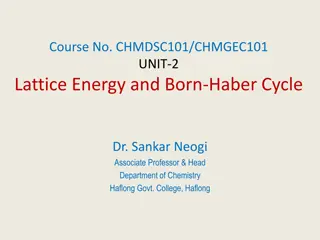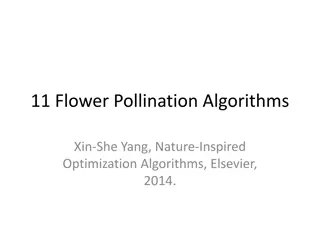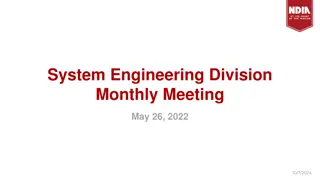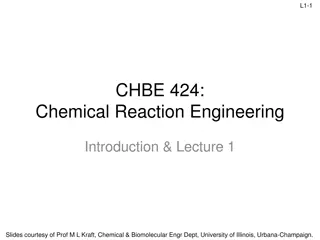Optimization Problems in Chemical Engineering: Lecture Insights
Delve into the world of process integration and optimization in chemical engineering as discussed in lectures by Dr. Shimelis Kebede at Addis Ababa University. Explore key concepts such as optimization problem formation, process models, degrees of freedom analysis, and practical examples like minimizing production costs and maximizing profits. Gain valuable insights into designing optimal solutions for real-world engineering challenges.
- Chemical Engineering
- Optimization Problems
- Process Integration
- Lecture Insights
- Addis Ababa University
Download Presentation

Please find below an Image/Link to download the presentation.
The content on the website is provided AS IS for your information and personal use only. It may not be sold, licensed, or shared on other websites without obtaining consent from the author. Download presentation by click this link. If you encounter any issues during the download, it is possible that the publisher has removed the file from their server.
E N D
Presentation Transcript
Process integration and optimization Lecture Four: Optimization Problem Formation Addis Ababa University AAiT Shimelis Kebede (Ph.D.) School of Chemical and Bio Engineering
Beyond previous lecture Process Model for Optimization Classification of Process Models Series Reaction Optimization: Theoretical Mode Empirical Model: Regression The Degrees of Freedom Analysis The Degrees of Freedom Analysis: Example Continuity of functions Analysis of functions for continuity Objective functions (discrete) Addis Ababa University AAiT Shimelis Kebede (Ph.D.) School of Chemical and Bio Engineering
General Problem Formation Given a design Vector: ? = ?1,?2, .,?? An objective function, f(x) A set of inequality constraints, g(x) 0 A set of equality constraints, h(x)=0 ? The general problem statement: ??? ? ? ??????? ?? g x 0 h x = 0 ?? ? ?? Addis Ababa University AAiT Shimelis Kebede (Ph.D.) School of Chemical and Bio Engineering
Understand the Problem: Example A manufacturer produces the chemical Q from two raw material:R1and R2. cost of R1is $100/kg and cost of R2 $50/kg. Determine the amount of each raw material required is to minimize the cost of product Q/kg. Addis Ababa University AAiT Shimelis Kebede (Ph.D.) School of Chemical and Bio Engineering
Optimal Design of a Can: The Problem A cylindrical can with volume at least Vo is to be designed in such a way as to minimize the total cost of the material in box of 12 cans, arranged in a way 3x4 pattern. The cost is proportional to surface area of cans and box. It is given as Cost=c1S1+c2S2 Where S1is the surface area of the 12 cans and S2is the surface area of the box. The constant coefficient c1andc2are positive. Another constraint is that no dimension of the box can exceed a given value Do. Addis Ababa University AAiT Shimelis Kebede (Ph.D.) School of Chemical and Bio Engineering
Product Mix A food company decides to produce two new soft-drinks: Drink-1 and Drink- 2. The Company has three plants. Production time needed for each unit produced Plant Drink-1 Drink-2 Availability /week 1 1 hour 0 4 hour 2 0 2 hour 12 hour 3 3 hour 2 hour 18 hour Unit profit for Drink-1 is $ 3 and unit profit for Drink-2 is $ 5. How many of each item should be produced to maximize the profit. Addis Ababa University AAiT Shimelis Kebede (Ph.D.) School of Chemical and Bio Engineering
Another Example on Product Mix A fertilizer manufacturing company produces two types of fertilizer: Type A:has high phosphorus content, Type B:having low phosphorous content. Raw Material Tons required per ton of fertilizer Maximum availability per day, ton Type-A Type-B Urea 2 1 3000 Potash 1 1 2400 Rock Phosphate 1 0 1000 Net Profit per ton 30 20 What should be the daily production schedule (tons of A and B produced) to maximized the profit? Addis Ababa University AAiT Shimelis Kebede (Ph.D.) School of Chemical and Bio Engineering
The transportation problem In a transportation problem, we wish to find the minimum cost distribution of a given commodity from a group (i=1, ,m) of supply centers (sources) to a group (j=1, .,n) of receiving centers (destinations). Each source has a certain supply (sj).Each destination has a certain demand (dj). The cost of shipping from a source to a destination is directly proportional to the number of units shipped. Addis Ababa University AAiT Shimelis Kebede (Ph.D.) School of Chemical and Bio Engineering
A simple transport network representation Sources Destination Demand d1 1 Supply s1 1 Demand D2 Supply s2 2 2 . . . . . . Xij Demand Dn n Supply sm m Costsij Addis Ababa University AAiT Shimelis Kebede (Ph.D.) School of Chemical and Bio Engineering
The Transportation Problem Minimize the total shipping cost Factory Warehouse B 7 3 10 90 Total Demand A 4 12 8 80 C 7 8 16 120 D 1 8 5 Supply 100 200 150 Total supply 1 2 3 Demand 160 450 450 Addis Ababa University AAiT Shimelis Kebede (Ph.D.) School of Chemical and Bio Engineering
The transportation problem: Matrix Notation Addis Ababa University AAiT Shimelis Kebede (Ph.D.) School of Chemical and Bio Engineering
Optimization Problem Formulation: Least square Regression Consider two Cases Experimental data exhibited a significant degree of scatter. How to drive a single curve (or line) that represents the general trend of data? Experiment data may be very precise. How to pass a curve or a series of curves through each of the point? Addis Ababa University AAiT Shimelis Kebede (Ph.D.) School of Chemical and Bio Engineering
Linearization of Nonlinear Relationship The exponential equation ??? = ????+ ??? ? = ??+ ?1? Addis Ababa University AAiT Shimelis Kebede (Ph.D.) School of Chemical and Bio Engineering

















